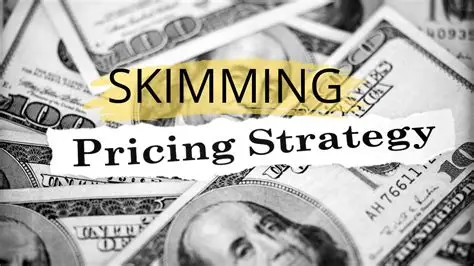How to Set the Right Price for a New Product
In business, few decisions are as difficult—or as defining—as setting the first price for a new product. Price isn’t just a number; it’s the market’s first message about who you are and where your product stands on the value map.
When you’re launching something new, traditional pricing logic doesn’t apply. You’re not just selling a product; you’re creating a new category. That’s where the real challenge begins: price too close to the market and you lose your innovation premium; price too far from it, and you may never enter the market. So how do you balance “the value of differentiation” with “market accessibility”?
1. Start from the Market, Not the Cost
Before any pricing decision, ask yourself:
Does the market have a segment willing to pay for innovation?
This isn’t a question for intuition—it’s a question for data.
In a recent project with a client in the solar energy sector, we faced a breakthrough product: higher efficiency, lower consumption, but with no existing price benchmark. Before making any decision, we conducted a deep market analysis using advanced AI tools to:
-
Analyze digital sentiment around renewable energy in the region
-
Track the purchasing power of tech-sustainability enthusiasts
-
Identify geographic and demographic segments that view innovation as an advantage, not a cost
The insight was clear: a small but powerful audience of early adopters—consumers willing to pay more for technological leadership. That defined our path.
2. Skimming Pricing Strategy: Leading from the Top
Our decision was intentional: enter with a high price—not for quick profit, but to establish a market position.
The Skimming Pricing strategy is built on a simple principle:
Start at the highest point of willingness to pay, then lower the price gradually as your customer base expands.
The goals:
-
Capture early returns to recover R&D and innovation costs
-
Position the product as a pioneering solution
-
Protect the brand from early price competition
But premium pricing cannot be announced overnight. Before launch, we built a Pre-Launch Marketing Campaign focused on the idea of “the next generation of technology.”
We created anticipation, not debate over price. The first customers didn’t question the number—they competed to be first.
3. Managing the Next Phases: From Value Monopoly to Market Expansion
As the product moved from the innovation to early adoption phase, we entered stage two: a strategic price adjustment.
The reduction wasn’t random—it was driven by:
-
Predictive analytics to pinpoint the first saturation point
-
Market intelligence to track potential new entrants
-
Data on when the market shifted focus from innovation experience to efficiency demand
We introduced a small, intentional price cut framed as a “special offer celebrating the product’s success.”
The result: double-digit growth in sales, without damaging brand perception.
As competition emerged, we moved to the third Skimming phase—another modest price drop paired with added value: new features, extended warranty, and enhanced after-sales service.
This kept market share strong while maintaining leadership positioning.
4. Execution Lessons for CEOs
From experience, four principles stand out for executives pricing new products:
-
Price is not cost + margin; it’s a strategic positioning signal.
Don’t justify your price—the market will, once it sees your value. -
Don’t yield to early market pressure.
Cutting prices too soon destroys profit and brand equity. Trust the research that built your decision. -
Be flexible, not hesitant.
Adjust when data shifts—but don’t dismantle the strategy.
AI tools offer predictive clarity, not excuses for retreat. -
Control the narrative.
How you communicate price changes matters as much as the change itself.
Make your early customers feel like partners in the journey, not victims of pricing.
5. Conclusion: Price as a Leadership Tool
Skimming Pricing isn’t greed—it’s strategy.
It’s a tool of leadership, not exaggeration. You start high because you’re leading the market, and lower gradually because you’re managing it.
Ordinary products are priced to compete.
Innovative products are priced to define leadership.
When your price is rooted in true value, backed by precise data, it becomes a strategic instrument for managing the innovation lifecycle—not just a sales tactic.
A smart pricing decision doesn’t start with the number; it starts with understanding value.
And the companies that dare to price innovation with confidence are the ones that stay on top—long after the market matures.




